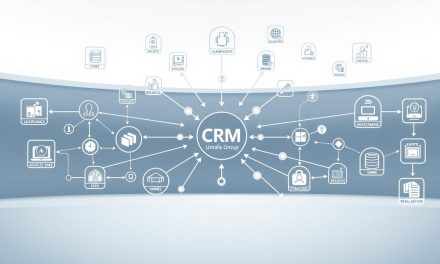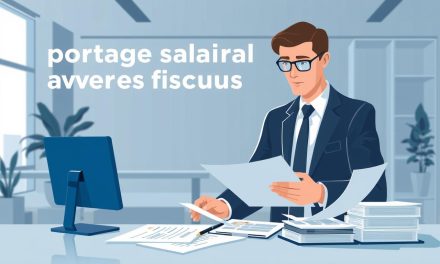Are you ready to transform your design skills into a thriving career? In today’s digital economy, the demand for skilled graphic designers is on the rise, offering tremendous opportunities for creative professionals seeking independence and career security.
As a designer, you have the potential to build a sustainable career by leveraging your experience and expertise
We’ll guide you through the essential steps to establish yourself as a professional freelance graphic designer, from building your portfolio to managing client relationships effectively. By understanding the graphic design landscape, you’ll be able to position your services effectively and create a stable income stream.
Table of Contents
Key Takeaways
- Transform your design skills into a sustainable freelance career.
- Discover the essential expertise needed to stand out in a competitive market.
- Learn how to build a professional portfolio and manage client relationships.
- Understand the graphic design landscape to position your services effectively.
- Balance creative excellence with business knowledge for a stable income stream.
Understanding the Freelance Graphic Design Landscape
Freelance graphic design has become a vital component of modern marketing strategies, driven by the need for compelling visual content. Businesses are increasingly seeking skilled designers who can deliver targeted solutions across various media platforms.
The Growing Demand for Freelance Designers
The freelance graphic design market has experienced significant growth as businesses recognize the value of professional visual communication in their marketing strategies. Today’s companies are seeking specialized designers who can deliver solutions across various media platforms, from traditional print to digital interfaces. The gig economy has normalized project-based work, making it easier for freelance designers to find consistent opportunities through various platforms and marketplaces.
Types of Graphic Design Services in High Demand
Understanding current market trends is essential for positioning your services effectively. Logo design, brand identity, web design, and social media graphics remain consistently in high demand. The flexibility of freelance work allows graphic designers to specialize in niche areas that command premium rates, such as UI/UX design, motion graphics, or packaging design. By focusing on these high-demand services, freelance graphic designers can develop specialized offerings that meet specific client needs and command higher rates.
Essential Skills for Successful Freelance Graphic Designers
The role of a freelance graphic designer demands a combination of artistic talent, technical knowledge, and business acumen. To excel in this field, one must be versatile and skilled in multiple areas.
Technical Design Skills and Software Proficiency
Mastering industry-standard design software is crucial for freelance success. Proficiency with Adobe Creative Suite, particularly Illustrator, Photoshop, and InDesign, forms the technical foundation of your service offerings.
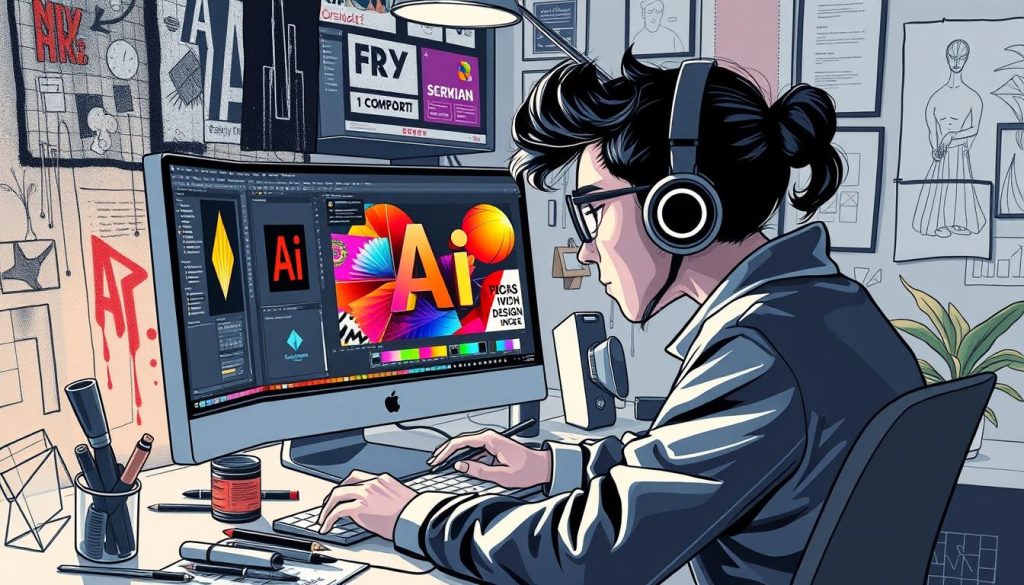
Business and Communication Skills
Beyond technical skills, successful freelance graphic designers develop strong business acumen, including client communication, project scoping, and basic accounting practices. Effective communication skills help you articulate your design decisions, manage client expectations, and navigate the revision process professionally.
Time Management and Project Organization
Time management becomes critical when juggling multiple clients and projects. You’ll need systems for tracking deadlines, managing revisions, and maintaining consistent productivity. Self-discipline and organization are foundational to freelance success, ensuring consistent quality and timely delivery.
To summarize, the key skills required for successful freelance graphic designers include:
- Mastering industry-standard design software, particularly Adobe Creative Suite.
- Developing strong business acumen, including client communication and project scoping.
- Effective time management and project organization.
- The ability to translate client requirements into visual solutions.
- Continuous learning to stay current with design trends and software updates.
- Problem-solving skills to develop creative solutions that achieve business goals.
Building Your Professional Graphic Design Portfolio
Establishing a strong graphic design portfolio is vital for a successful freelance career. Your portfolio is a showcase of your best work, demonstrating your skills and experience to potential clients.
Showcasing Your Best Work
Curate your portfolio carefully, focusing on quality over quantity. Include only your strongest work that represents the type of projects you want to attract in the future. Your portfolio should showcase not just your technical skills but your strategic thinking and problem-solving abilities.
A well-organized portfolio is essential for making a good impression on potential clients. Ensure that your portfolio is easy to navigate and visually appealing.
Creating Case Studies That Attract Clients
Case studies elevate your portfolio by demonstrating your design process, from initial brief to final execution. They show potential clients how you approach challenges and deliver solutions. Include real results whenever possible, such as metrics showing how your logo design increased brand recognition or how your website redesign improved conversion rates.
By including case studies in your portfolio, you can demonstrate your value to potential clients and showcase your experience in graphic design.
Portfolio Platforms for Graphic Designers
Utilize specialized portfolio platforms like Behance, Dribbble, or Adobe Portfolio that connect you with the design community and potential clients searching for specific expertise. These platforms can help you showcase your work and attract new clients.
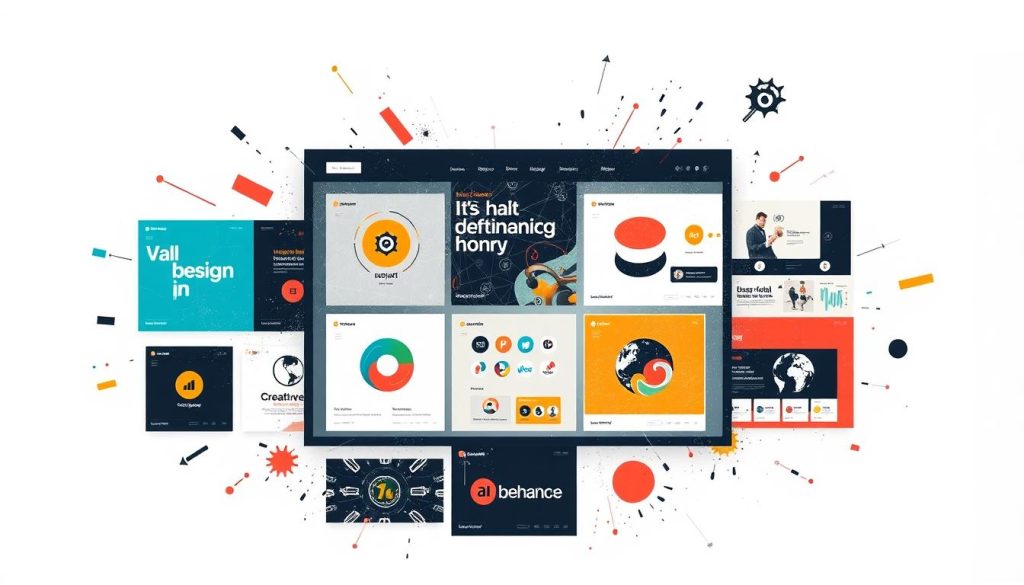
Setting Up Your Freelance Graphic Design Business
Establishing a successful freelance graphic design business requires careful planning and setup. This involves several critical steps that will lay the foundation for your career as a freelance graphic designer.
Choosing the Right Legal Structure in France
Freelance graphic designers in France must choose a legal structure for their business. The two primary options are sole proprietorship and creating a one-person company. A sole proprietorship can be set up traditionally or by opting for micro-entrepreneur status, which has a maximum annual turnover limit of €70,000. In contrast, setting up a one-person company involves more complex and costly procedures but offers no turnover limit. Choosing the right legal structure is crucial as it affects taxation, liability, and growth potential.
The micro-entrepreneur status is a popular choice due to its simplicity, but it comes with the aforementioned turnover limit. On the other hand, a one-person company provides more flexibility in terms of turnover but requires more administrative work. It’s essential to consider your business goals and financial situation when deciding between these options.
Setting Up Your Workspace and Essential Tools
Creating a professional workspace is vital for productivity and work-life balance. Consider ergonomics, lighting, and technology requirements when setting up your home office or studio. Investing in professional-grade equipment such as a color-calibrated monitor, graphics tablet, and adequate processing power can significantly enhance your work quality and efficiency.
Essential tools for a freelance graphic designer extend beyond design software to include project management solutions, time-tracking applications, and accounting systems. These tools help streamline business operations, allowing you to focus on design work.
Creating Your Brand Identity as a Designer
Developing your brand identity is a critical exercise for any graphic designer. Your personal branding should reflect your design philosophy and appeal to your ideal clients. This includes creating a professional logo, establishing a consistent visual brand, and defining your unique value proposition. A strong brand identity helps differentiate you from competitors and attracts potential clients.
By carefully setting up your business, choosing the right legal structure, creating an efficient workspace, and developing a strong brand identity, you’ll be well on your way to establishing a successful freelance graphic design business.
Pricing Your Freelance Graphic Design Services
Pricing your freelance graphic design services effectively is crucial for attracting clients and sustaining your business. To achieve this, you need to understand the market rates for different projects, develop a pricing strategy that reflects your expertise, and create professional quotes and contracts.
Understanding Market Rates
Market rates for graphic design services vary widely based on the project’s complexity, the designer’s experience, and the deliverables. For instance, logo design can range from €800 to €3,500, while poster design can cost anywhere from €200 to €5,000. Understanding these rates helps you position your services competitively. You can refer to resources like this guide to learn more about defining your pricing and identifying your target clients.
Developing Your Pricing Strategy
Your pricing strategy should reflect your level of expertise, the value you bring to clients, and the requirements of each project. Options include hourly rates, project-based fees, value-based pricing, or retainer arrangements. Consider implementing a tiered pricing structure to make your services accessible to a broader range of clients. This approach allows you to cater to different client needs and budgets, ultimately growing your business.
Creating Professional Quotes and Contracts
Professional quotes should clearly outline the project scope, deliverables, timeline, revision policy, and payment terms. A well-structured quote helps prevent scope creep and payment disputes. Contracts are equally important, as they protect both you and your clients by establishing clear expectations. Include details on intellectual property rights, usage limitations, and cancellation policies in your contracts to ensure a smooth working relationship.
By understanding market rates, developing a thoughtful pricing strategy, and creating professional quotes and contracts, you can effectively price your freelance graphic design services and build a sustainable business.
Finding and Securing Graphic Design Clients
Client acquisition is a vital component of a successful freelance graphic design career, requiring strategic planning and execution. As a freelance graphic designer, your ability to secure clients directly impacts the viability and growth of your business.
Building Your Professional Network
Building a professional network remains one of the most effective client acquisition strategies. Attend industry events, join professional associations, and maintain relationships with past colleagues and clients to leverage referrals. Networking not only opens up new opportunities but also provides a support system that can help navigate the challenges of freelancing.
Leveraging Online Platforms and Marketplaces
Online platforms and marketplaces like Freelancer, Upwork, and 99designs provide access to global clients seeking graphic design services. To succeed on these platforms, create compelling profiles that showcase your expertise and specializations. Utilize these platforms to demonstrate your capabilities and attract potential clients.
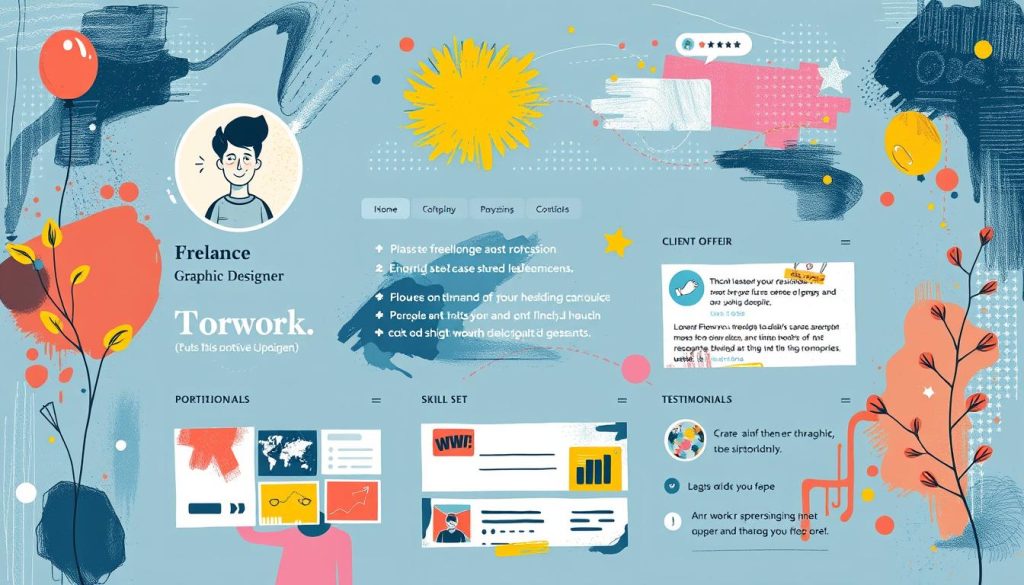
Effective Pitching and Proposal Techniques
Effective pitching requires understanding the client’s business objectives and demonstrating how your design solutions will address their specific challenges. Tailor your proposals to each client’s needs, avoiding generic templates that fail to showcase your personalized approach. Personalization is key to distinguishing yourself from competitors and securing client trust.
Managing Client Relationships and Projects

Effective client relationship management is crucial for freelance graphic designers to deliver successful projects and build a strong professional reputation. To achieve this, designers must balance their creative skills with effective communication and project management techniques.
Setting Clear Expectations and Boundaries
Establishing clear expectations and boundaries is vital at the outset of any project. This involves defining project parameters, communication protocols, and delivery timelines to ensure both parties are aligned. A thorough onboarding process helps gather essential information about the client’s brand, audience, and objectives. Creating a standardized questionnaire or brief template can ensure that all necessary requirements are captured.
Effective Communication Throughout Projects
Regular communication is key to preventing misunderstandings and building client confidence. Scheduling check-ins at key milestones allows designers to share progress and gather feedback. Presenting design concepts effectively is also crucial, requiring designers to explain their creative decisions in business terms that connect to the client’s objectives.
Handling Revisions and Feedback
Managing the revision process requires both flexibility and structure. Clearly defining the number of revision rounds included in the project scope and establishing a system for tracking change requests helps maintain a smooth workflow. Feedback sessions should be constructive and specific, guiding clients to provide actionable input rather than vague reactions.
| Best Practices | Description | Benefits |
|---|---|---|
| Clear Expectations | Define project scope, timelines, and communication protocols | Prevents misunderstandings, ensures alignment |
| Regular Communication | Schedule check-ins at key milestones | Builds client confidence, prevents misunderstandings |
| Structured Revisions | Define revision rounds and track change requests | Maintains workflow efficiency, manages client expectations |
Conclusion: Sustaining and Growing Your Freelance Graphic Design Career
Succeeding in the freelance graphic design world means continuously evolving your skills, services, and business practices to remain competitive. As a graphic designer, it’s essential to prioritize professional development by allocating time and resources for learning new software, techniques, and business strategies.
Diversifying your income streams can provide financial stability. Consider creating digital products, teaching workshops, or developing passive income sources that complement your client work. Building long-term client relationships is also more efficient than constantly seeking new projects; implement retention strategies like follow-up systems or loyalty discounts.
Your personal brand should evolve as your expertise grows. Regularly update your portfolio, website, and professional profiles to reflect your current capabilities and career direction. Maintaining a work-life balance is crucial for creative sustainability, and establishing systems that protect your personal time while meeting client needs professionally is vital.
As your freelance graphic design business grows, financial management becomes increasingly important. Consider working with an accountant specializing in freelance businesses to optimize your tax strategy and financial planning. By adopting an entrepreneurial mindset that balances creative excellence with strategic business development, you can ensure long-term career security and satisfaction.
FAQ
What skills are required to become a successful independent graphic designer?
To succeed as an independent graphic designer, you’ll need to possess a combination of technical design skills, such as proficiency in Adobe Creative Suite, particularly Photoshop and Illustrator, as well as business and communication skills to effectively manage clients and projects.
How do I determine my pricing as a graphic designer?
Determining your pricing involves understanding market rates for different projects, considering factors like the complexity of the task, the time required, and your level of expertise, and developing a pricing strategy that balances your needs with client expectations.
What are the most effective ways to find clients as a graphic designer?
Building a professional network, leveraging online platforms and marketplaces, and developing effective pitching and proposal techniques are key strategies for finding and securing clients as a graphic designer.
How do I create a strong portfolio as a graphic designer?
A strong portfolio showcases your best work, including case studies that demonstrate your problem-solving skills and the value you bring to clients, and is presented on a platform that is easy to navigate and visually appealing.
What are the essential tools for a graphic designer?
Essential tools for graphic designers include Adobe Creative Suite, particularly Photoshop and Illustrator, as well as other software and hardware that enable efficient workflow and high-quality output.
How do I manage client relationships and projects effectively?
Effective client relationship management involves setting clear expectations and boundaries, maintaining open and effective communication throughout projects, and handling revisions and feedback in a professional manner.


